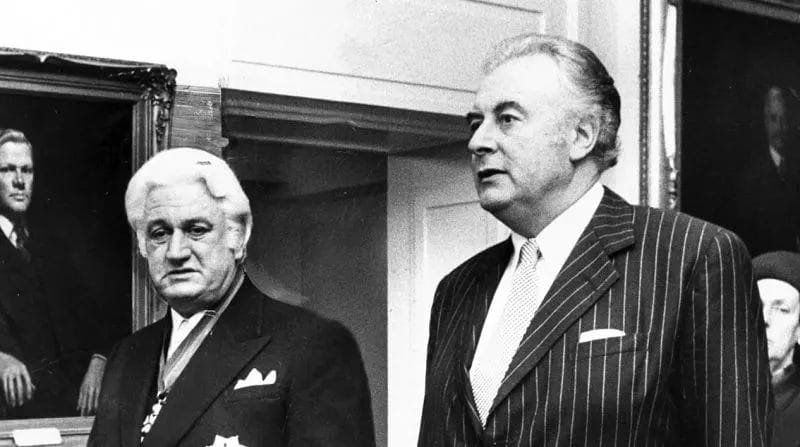
Sexual harassment entered the hallowed halls of the High Court last week, but not in the form of a landmark decision, which is how the law usually reaches the building. To date, no sexual harassment case has ever reached the High Court; these cases tend to settle.
Instead, it was in the form of sexual harassment allegations against former justice Dyson Heydon. These allegations illustrate that no workplace or profession is immune from this type of behaviour.
Read more: Dyson Heydon finding: Will the legal profession act on sexual misconduct?
In 2018, the Australian Human Rights Commission found 39% of women had experienced sexual harassment in the workplace in the past five years. It recently reported that sexual harassment is costing the Australian economy $3.8 billion per year. This doesn't include the unquantifiable emotional and psychological costs to the women subjected to it.
Sexual harassment has been unlawful for almost 40 years, yet women still encounter it in the workplace. Sexual harassment laws have clearly failed to address this problem, because their design is flawed.
A design problem
The central problem is that the law relies on the individual who has been sexually harassed to take action to address the problem. There's no regulator with the power to tackle sexual harassment, nor are employers duty-bound to prevent sexual harassment in the same way as they must make sure that their workplace is safe.

The risk of harm from sexual harassment is not regarded in the same way as the risk of losing a finger.
The legal system contains impediments that discourage victims from taking their case beyond the workplace. The law is full of complex definitions and procedures. Sexual harassment claims often intersect with other claims such as workers' compensation, workplace health and safety, and unfair dismissal. This is a difficult terrain to navigate without guidance from a lawyer, but legal advice is expensive.
The cost of pursuing a legal claim
The Australian Human Rights Commission and its equivalent state and territory agencies receive sexual harassment complaints, investigate them, and if the complaint has substance, they'll bring the parties together to see if they can reach a settlement without going to court. Most complaints are resolved this way.
For many people, settling is an attractive option because it's confidential. My research suggests that a victim will receive a higher amount of compensation at this stage than from the court. They will also avoid the costs associated with going to court – and these costs are significant.
The risk of harm from sexual harassment is not regarded in the same way as the risk of losing a finger.
There are non-quantifiable costs – taking time away from work and family to pursue the claim, the stress of a trial, and the emotional energy it requires. Legal representation (which often includes a barrister) is expensive, and is coupled with the considerable risk of losing the case and having to pay the other side’s legal fees.
There's also a risk – which is an oddity of this area of law – that the victim might win, but the court will not award her enough in damages to pay her legal fees, let alone cover the loss she's suffered from being sexually harassed. I've interviewed lawyers who have spoken about clients who "broke even" because they were able to cover their legal fees with their damages payment. Other lawyers told me about clients who have mortgaged their home or borrowed money to fund their case.
Taking all of this into account, it's not surprising that so few women decide to make a complaint about sexual harassment, and those who do decide to settle.
Preventing workplace sexual harassment
Currently, there are no mechanisms in place that require employers to be proactive and do something to identify the risk of sexual harassment.
We expect employers to educate their employees about what is and what isn't acceptable in the workplace. Our laws assume this will be enough to change behaviour, but this approach isn't working.
So what are the options for improvement?

The Australian Human Rights Commission’s report included 55 recommendations for improving the legal framework, and changing the approach to one that prevents sexual harassment and addresses its causes, rather than one that responds individually and reactively. The recommendations include:
- requiring employers to take measures to eliminate sex discrimination, sexual harassment and victimisation from their workplace
- giving the commission the power to conduct inquiries into systemic sex discrimination and sexual harassment
- allowing unions to take sexual harassment claims to court on behalf of victims.
If adopted, these recommendations will represent a dramatic shift in the way sexual harassment is dealt with, but we could go one step further by giving the equal opportunity agencies the power to enforce the law.
Every state and territory has an equal opportunity agency (operating alongside the Australian Human Rights Commission), but they can’t give legal advice or take a sexual harassment claim to court on behalf of a victim.
What if the agency could enforce the law by investigating allegations, inspecting workplaces, interviewing employees, entering into undertakings with employers, or issuing compliance notices? This would significantly improve the current approach.
Employers will find the carrot of complying voluntarily far more attractive if someone is going to wave a big stick at them if the carrot isn’t enough of an inducement.





